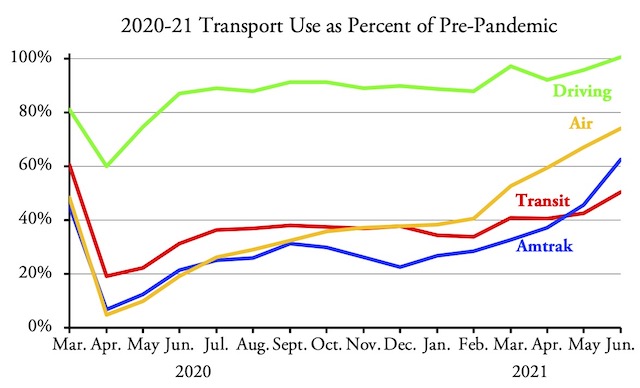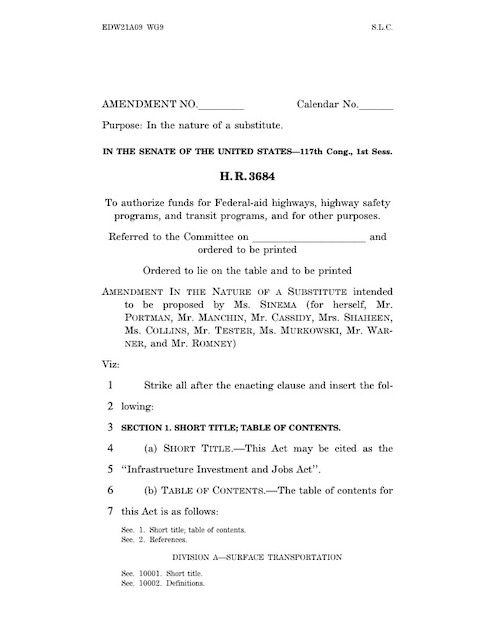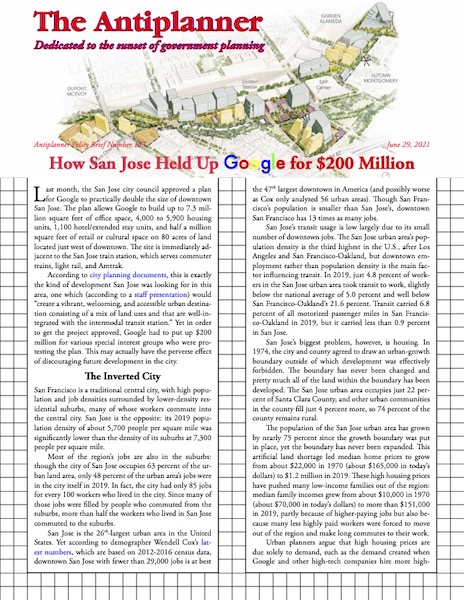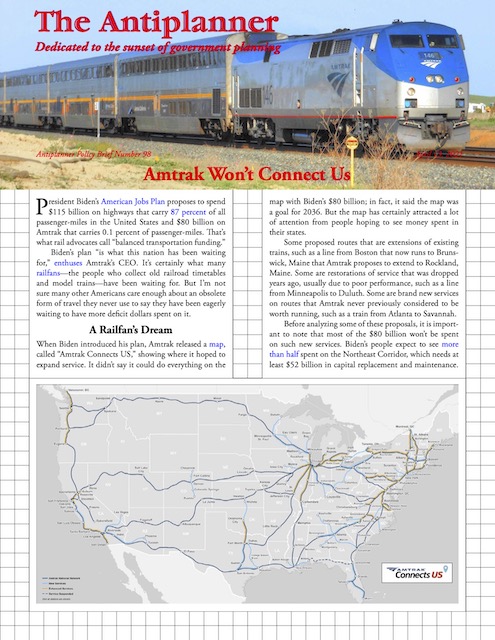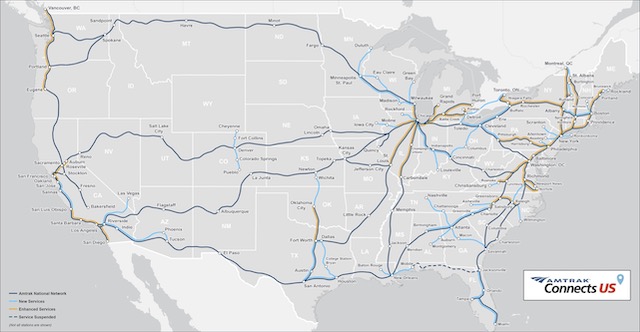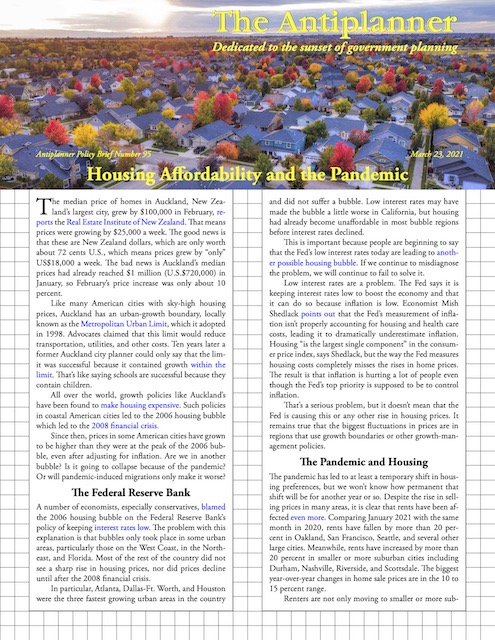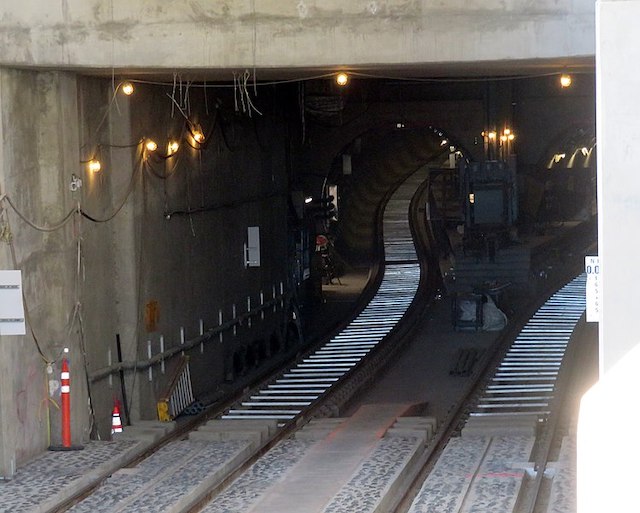Americans drove more miles in June 2021 than June 2019, the first time since the pandemic began that driving exceeded pre-pandemic levels, according to data published yesterday by the Federal Highway Administration. We drove 282.5 billion vehicle miles in June 2021, almost half a percent more than the 281.2 billion driven in June 2019.
When compared with pre-pandemic levels, driving has effectively recovered from the pandemic, while other forms of travel have not.
To be fair, June 2021 had more business days than June 2019, which helped boost miles of driving. July 2021 had fewer business days that July 2019, so we’ll see next month how much of a difference this makes. Continue reading

